The UTMB School of Medicine has announced the five finalists who were selected by their peers in the graduating class to receive the prestigious 2011 Gold-Headed Cane Award, the highest honor bestowed upon a graduating medical student. The winner’s name will be announced at the June 4 commencement ceremonies for the school.
The Gold-Headed Cane Award has a long tradition at UTMB. Dr. Charles T. Stone Sr., professor emeritus of internal medicine, established the award in 1960. A gold ring engraved with the newest recipient's name is added to the staff of the cane to commemorate the occasion.The cane is on permanent display at the Moody Medical Library; recipients receive a replica.
“To be nominated by your peers for the Gold-Headed Cane Award is an extraordinary honor, and I am immensely proud of these finalists,” said Dr. Garland D. Anderson, dean of medicine, executive vice president and provost of the School of Medicine. “They are not only quite accomplished, they have demonstrated to their fellow students their compassion for patients and others, and represent the best of the healing profession.”
The UTMB tradition honors the 18th century practice of presenting a gold-headed cane to the pre-eminent physician in English society. One such cane was continuously carried from 1689 to 1825 by five distinguished British physicians and now resides in the Royal College of Physicians in London.
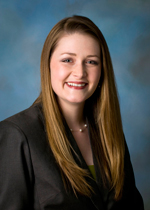 Heather M. Relyea Ashley
Heather M. Relyea Ashley
Heather Relyea Ashley, the daughter of missionary linguists, spent her childhood growing up in the remote Papua New Guinean rainforest among the Aruamu tribe. She describes being exposed at an early age to the affects of living with inadequate medical care.
"With little to no health care available, both my friends and my family combated life-threatening illnesses. I remember holding living room clinics for my dolls who contracted the deadly diseases I saw around me: malaria, tuberculosis and meningitis. Watching friends die was merely part of the society in which I grew up," Relyea Ashley said.
Two life events — undergoing spinal fusion surgery at the age of 14 and the sudden death of her father, who suffered a heart attack in Papua New Guinea with no access to medical care — solidified her desire to become a doctor.
"These two events served as catalysts for me, spurring me to become a physician capable of caring for adults and children, as well as to engage in the marathon that is preventative medicine," she said.
Relyea Ashley said as she progressed through medical school she was "drawn to those rotations that allowed long-term relationships with patients. I was deeply impressed by the attending physicians who practiced humanistic medicine, artfully combining solid science with love for the patient; I wanted to emulate these examples. I was enamored in particular with two fields: internal medicine and pediatrics. They seemed to encompass all that I had envisioned in medicine."
Relyea Ashley will serve a combined residency in internal medicine and pediatrics at University Hospital in Cincinnati, Ohio.
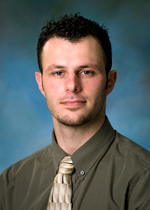 Darvy Mann
Darvy Mann
Darvy Mann's second careeer choice was teaching. He worked as a high school physics teacher during his final year of college and said he "realized as a pediatrician I would have an opportunity to practice medicine and still be a teacher."
Mann recently completed a study that looked at attitudes of health care professionals toward the inmate patient population, saying that "through this study, I was able to further show my strong feeling that as physicians, we are personally responsible for each and every patient that we encounter and for all of those people who are ill. It is this responsibility that drives me to be a primary care physician. I want to help patients to feel secure in their health from their social situation to the medical problems."
Through his work with the Rene Laennec Osler Student Society and the Gold Humanism Honor Society, Mann has participated in many community service activities. He says that these experiences have helped him to "better understand the situations that plague many of the patients I encountered in the UTMB clinics and hospitals. Even more important than the UTMB patients, I learned to see the plight of those people who could not access care. I truly love reaching out to those in the most need."
Mann will serve his residency in pediatrics at the Medical College of Wisconsin Affiliated Hospital in Milwaukee, Wis.
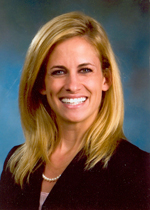 Mary Chandler Rainey
Mary Chandler Rainey
Mary Chandler Rainey says she believes that the most important duty every medical student faces is determining what it means to be a doctor.
Rainey describes medicine as "an art of balancing scientific knowledge with compassion and, in the words engraved on the Gold-Headed Cane, 'humility, humanity and fidelity.'" Rainey says that her experience at UTMB taught her that balance — "as a teaching environment, it gave me a solid foundation in science on which to practice evidence-based medicine throughout my career, but it also provided faculty who served as role models with their interest in the welfare of the patient."
Rainey participated in many volunteer opportunities during her time at UTMB, including serving as director of the Patient Assistance Program at St. Vincent's Clinic where she worked with drug companies to get medications donated to underpriviledged patients. Rainey also was instrumental in creating a patient library and and bibliotherapeutic program called Books-to-Bedside, collecting more than 7,000 books for UTMB patients and their families.
She says her goal as a doctor is to "find the balance of medicine as an art, one held up by the three pillars of the Gold-Headed Cane Award, and I am honored to be recognized by my peers as someone on that track."
Rainey will serve her residency in psychiatry at Einstein/Beth Israel Medical Center in New York, N.Y.
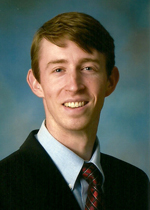 Phillip Scott
Phillip Scott
Phillip Scott interned at a local hospital in West Africa for two months, providing first aid to orphans and says that this first encounter with providing medical care for children changed his life.
"This experience opened my eyes to the tremendous health needs of our global community and is one of the main reasons I joined the global health track at UTMB. I wanted to gain greater insight and training in practicing medicine in an international setting in hopes of eventually applying this knowledge and experience in orphanages around the world," Scott said.
Scott, the oldest of five boys, says his volunteer work mentoring youth at summer camps and his sense of duty to children around him has led him into the field of pediatrics.
"In high school, I spent my summers working as a camp counselor. I was responsible for the physical, emotional, and mental well being of four to six children, from morning to night, for one week at a time. During college and medical school, I mentored people younger than me through various programs at church and school," Scott said. "All of these experiences have given me a greater sense of how to communicate with children on their level and understand their unique needs, which will be a great asset as I encounter children in a medical setting where they may be scared or hurting."
Scott describes a defining moment in his medical school experience with a tiny pediatric patient that he will never forget, saying the patient "was a neonate born at 22 weeks gestation. I rushed to the Labor and Delivery Department with the newborn nursery team when she was born to find a baby only slightly larger than my hand. She was the embodiment of both the beauty, and also the fragility of life. It’s exciting to think that as a pediatrician I will be part of saving the lives of such patients."
Scott will serve his residency in pediatrics at Texas Tech University Affiliate in Lubbock, Texas.
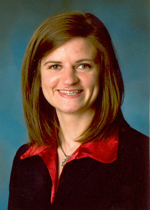 Karen Sargent
Karen Sargent
Karen Sargent recalls a moment of clarity that came to her, saying that "the constant, rapid, soft tones of the fetal heart left me amazed and excited on the very first day of my obstetrics and gynecologist rotation. Later that day, I met the 19 -year-old who presented to clinic for a routine prenatal checkup at 24 weeks gestation; she had a history of postpartum depression and a lack of social support. As I sat listening to the struggles she faced as a single mother, I experienced a moment of eureka and began to feel very excited; I suddenly realized that I had met the representative of my ideal patient population."
She credits her work as a summer camp counselor with creating a strong desire to work with adolescents and ultimately seek a career in obstetrics and gynecology.
"Summer after summer, I would meet teenage girls who appeared very well groomed and responsible on the outside, yet they were internally fighting diseases of substance abuse, eating disorders, and low self-esteem. I realized that a career in obstetrics and gynecologist would provide me the opportunity to encourage not only good physical health, but also mental health as well. Also, with the rise in teenage pregnancies, further opportunities exist to be the confidante a patient needs during hard times, to promote feelings of self-respect and self-worth, and to help women feel healthy."
Sargent says she relishes the surgical aspects of a career as a obstetrician and gynecologist to "not only provide for surgical intervention but also provide the opportunity to correct a patient’s anemia for dysfunctional uterine bleeding, to increase a couple’s chance of having a child, or walk with a woman through the fears that her radical hysterectomy will make her feel 'less of a woman.' Being in the operating room also reinforces the skills needed to practice medicine such as leadership, humility, and the ability to work with others as a team."
Sargent will serve her residency in obstetrics and gynecology at Baylor College of Medicine in Houston, Texas.